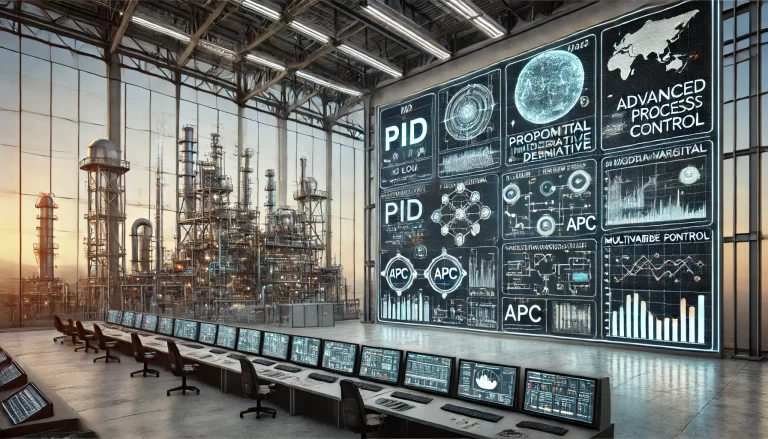PID, short for Proportional–Integral–Derivative, is one of the most widely used control strategies in industrial automation. Despite its simplicity in formulation, PID encapsulates a profound understanding of time, feedback, and human decision-making logic. This article explores the historical context, philosophical underpinnings, engineering applications, and ongoing challenges of PID control in the industrial field.
1. What Does PID Really Represent?
The term “PID” combines three adjectives—Proportional, Integral, and Derivative—into a noun representing a control mechanism. Interestingly, this order reflects both the historical adoption of these techniques in industrial control and their relative importance in most control systems.
Beyond their mathematical meaning, the three components represent different aspects of time:
Proportional (P) reflects the present, acting immediately based on the current error.
Integral (I) reflects the past, accumulating errors over time.
Derivative (D) anticipates the future, reacting to how the error is changing.
This tripartite division reflects not only a technical design but also a philosophical structure: grounding in the present, learning from history, and predicting what’s to come.

2. The Historical Roots of PID
PID control predates modern control theory and was developed before even the term “feedback” became standard. It emerged from practical engineering needs—particularly in process industries—long before the formalization of control systems.
In contrast to modern control algorithms often labeled as “Model Predictive Control,” “Robust Control,” or “Adaptive Control,” the PID controller stands out by being one of the first to emulate human-like behavior in handling deviations. Its design reflects a kind of intelligent control that requires no model of the system, only feedback from output to adjust input.
3. PID and Frequency Domain Interpretation
From a frequency-domain perspective, PID control corresponds to shaping the system response across different frequency bands:
Integral dominates in low frequencies, eliminating steady-state error.
Proportional controls the mid-frequency response, maintaining stability and responsiveness.
Derivative enhances performance in high-frequency dynamics by anticipating future behavior.
This makes PID a versatile controller capable of handling a wide variety of process characteristics, especially around a specific operating point where the system can be approximated as linear.

4. Why PID Is Still So Popular
Despite being over a century old, PID controllers remain prevalent in nearly every industrial sector. This enduring relevance is due to:
Simplicity: With only three parameters, it is easy to implement and understand.
Robustness: PID can tolerate model uncertainties and still provide acceptable performance.
Universality: Many physical systems, though nonlinear in nature, can be approximated as linear in a small range, making PID applicable.
In fact, PID’s strong performance and forgiving nature allow many systems to run effectively even with default or poorly tuned parameters—though this is far from optimal.
5. The Real Problem Is Not PID
Many engineers criticize PID for poor performance in practice, but the root cause is rarely the algorithm itself. Instead, the main issues are:
Unreasonable control schemes: Poor design in control loops and process integration.
Improper tuning: Parameters not tailored to the system dynamics.
Without solving these fundamental problems, even the most advanced control methods will struggle. Conversely, if the scheme is sound and the PID parameters are well-tuned, many systems do not need advanced control at all.
6. Advanced Control vs PID: Complementary, Not Competing
Advanced control strategies—such as MPC, adaptive control, and fuzzy logic—offer improved performance in complex, multivariable, or highly nonlinear systems. However, these methods:
Require high implementation costs
Depend on accurate models
Demand well-trained personnel
Therefore, PID and advanced control should not be seen as mutually exclusive. Instead, they should be chosen based on cost-benefit analysis, engineering feasibility, and system complexity.

7. A Call to Action: Focus on Fundamentals First
In today’s engineering landscape, innovation is often overemphasized while basic control principles are overlooked. Many site-level issues could be resolved simply by:
Rethinking the control architecture
Properly tuning existing PID loops
Training engineers in practical control strategies
Before promoting new technologies, engineers must ensure that PID implementation is correct and effective. Even the most advanced strategies ultimately rely on a deep understanding of PID, as they often build upon or wrap around basic PID control.

Conclusion
PID control is more than a century-old algorithm—it is a philosophical and practical cornerstone of industrial automation. It embodies feedback, causality, and time-domain reasoning in a simple yet powerful form. While advanced control has its place, the continued dominance of PID is a testament to its enduring effectiveness. Understanding and mastering PID is not only essential for solving today’s control problems—it is also the key to unlocking more sophisticated automation in the future.
